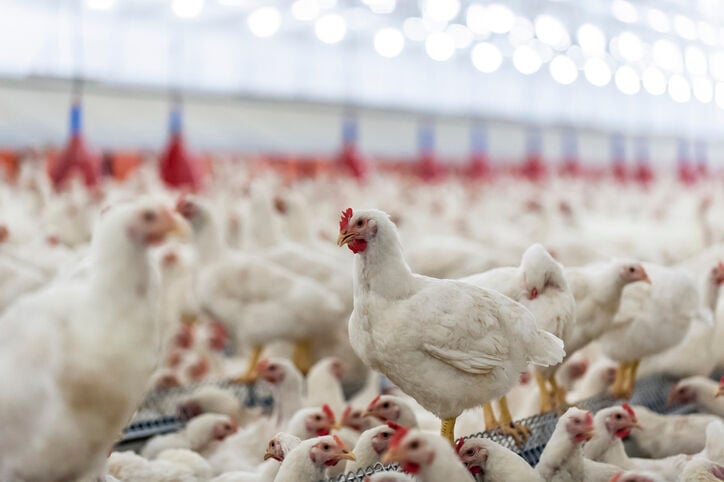With the avian influenza threat rising in Pennsylvania, J. Craig Williams got a chance to help where the disease is already raging.
Williams, a Penn State Extension dairy educator in Tioga County, aided the disease response in California from Dec. 10 to 23.
“They have a big problem out there. They’re still working through it,” Williams said during a call Wednesday hosted by the Center for Dairy Excellence.
California has been one of the places worst hit by avian influenza over the past 30 days.
The state has lost 3.5 million birds on 13 commercial farms and seen 67 dairies test positive.
The virus is lethal to poultry, and infected flocks are depopulated. Dairy cattle are less seriously affected but often lose productivity.
About 120 people, many from USDA and the state Department of Food and Agriculture, are part of that response.
(It’s a rough time for disasters in California. The state is also battling wildfires near Los Angeles that had killed 25 people as of Wednesday.)

J. Craig Williams, Penn State Extension educator
Williams, who has a background in animal mortality disposal, worked on 10 or so poultry farms that totaled about 1.7 million birds.
His team never finished its work on any of the farms, which seemed to reflect broader delays with the carcass disposal phase of the response, Williams said.
Farms were landfilling and composting birds, and egg farms kept producing until depopulation was finished.
Williams wore Tyvek suits duct-taped at the wrists and ankles, changing his coveralls four times a day.
He was not part of the dairy avian influenza response team, but he visited one farmer he already knew whose 4,000-cow farm had tested positive in October.
The farmer didn’t see as many physical signs of illnesses as other infected California dairies have.
But he had many cows with fevers of 104 to 106 degrees, which led to cows going off milk.
The farm also had a rapid rise in abortions and a decrease in first-service conception. Milk production has started coming back after several months.
Williams said some people think California’s dairy industry has reached herd immunity and that’s driving down avian influenza infections in cattle.
He frames it differently.
“They’re running out of dairies because they’ve got 700-some dairies (infected) out of 1,100,” Williams said. “They’re going to eventually get everybody.”
Williams said he’s heard most of the California poultry outbreaks are linked to the dairy strain of avian influenza, which suggests people rather than wild birds are transporting the virus.
If Pennsylvania would have an outbreak in dairy cattle, the farm would need to immediately identify everyone who comes onto the farm.
Anyone living with a poultry worker would be a high risk for spreading the disease, he said.
The avian influenza risk is extremely high in Pennsylvania right now, said Dr. Alex Hamberg, the state veterinarian.
Snow geese, Canada geese and a red-tailed hawk have tested positive this month as the virus circulates among migrating waterfowl.
“We want to have biosecurity at maximum,” Hamberg said.
The state has not detected avian influenza in its mandatory milk testing programs.
But Hamberg encouraged dairy farmers to develop biosecurity plans now and, if they choose, submit them to the Ag Department for review.
The plans are not required for dairies but will help farms continue to move milk in case of an outbreak.
Penn State is hosting biosecurity planning workshops around the state Jan. 27 and 30. See the list of locations.
The Pennsylvania Dairy Summit will also have biosecurity planning resources Feb. 5 to 6 in State College.





